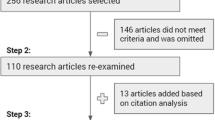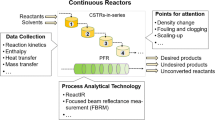Abstract
Product design and fabrication constitute an important business activity in any manufacturing firm. Designing an optimized product fabrication process is an important problem in itself and is of significant practical and research interest. In this paper, we look into a printed circuit board (PCB) fabrication process and investigate ways in which the fabrication cycle time can be minimized. Single class queueing networks constitute the modelling framework for our study. The model developed in this paper and the analysis experiments carried out are based on extensive data collected on a PCB fabrication company located in Bangalore, India. This is a representative PCB fabrication company involving multiple, concurrent fabrication works with contention for human/technical resources. Our model seeks to capture faithfully the flow of the fabrication process in this company and such other organisations, using queueing networks. Using the model developed, we explore how the cycle times can be reduced using input control, load balancing, and variability reduction. The model presented is sufficiently generic and conceptual; its scope extends beyond that of a PCB fabrication organization.
Similar content being viewed by others
References
Adler P S, Mandelbaum A, Nguyen V, Schwerer E 1995 From project to process management: An empirically-based framework for analyzing product development time.Manage. Sci. 41: 458–484
Adler P S, Mandelbaum A, Nguyen V, Schwerer E 1996 Getting the most out of your product development process.Harvard Business Rev. 22: 134–152
Clark K B, Wheelwright S C 1993Managing new product and process development (New York: Free Press)
Hopp W J, Spearman M L, Woodruff D L 1990 Practical strategies for lead time reduction.Manuf. Rev. 3: 78–84
Hopp W J, Spearman M L 1996Factory physics: Foundations of manufacturing management (New York: Irwin)
Kiran Kumar V 1995Queueing network models of new product development. M E Project Report, Department of Computer Science and Automation, Indian Institute of Science, Bangalore
Krishnan V, Eppinger S D, Whitney D E 1995 Accelerating product development by the exchange of preliminary product design information.J. Mech. Des. 117: 491–498
Lyons K W, Duffey M R, Anderson R C 1995 Product realization process modeling: A study of requirements, methods, and research issues. Technical Report, National Institute of Standards and Technology, Gaithersburg, Maryland, USA
Millson M R, Raj S P, Wilemon D 1992 A Survey of major approaches for accelerating new product development.J. Product Innovation Manage. 9: 53–69
Nagaraju P 1997Analytical and object-oriented process models for software product development. M E Project Report, Department of Computer Science and Automation, Indian Institute of Science, Bangalore
Narahari Y, Viswanadham N, Kiran Kumar V 1999 Lead time modeling and acceleration of product design and development.IEEE Trans. Robotics Autom. 15: 882–896
Suri R, Veeramani R, Church J 1995 Industry teams up with university to drive Quick Response Manufacturing.HE Solutions 27(11): 27–30
Suri R 1998Quick response manufacturing: A companywide approach to reducing lead times (New York: Productivity Press)
Viswanadham N, Narahari Y 1992Performance modeling of automated manufacturing systems (Englewood Cliffs, NJ: Prentice Hall)
Author information
Authors and Affiliations
Rights and permissions
About this article
Cite this article
Aithal, K.S., Narahari, Y. & Manjunath, E. Modelling, analysis, and acceleration of a printed circuit board fabrication process. Sadhana 26, 447–463 (2001). https://doi.org/10.1007/BF02703442
Received:
Revised:
Issue Date:
DOI: https://doi.org/10.1007/BF02703442




